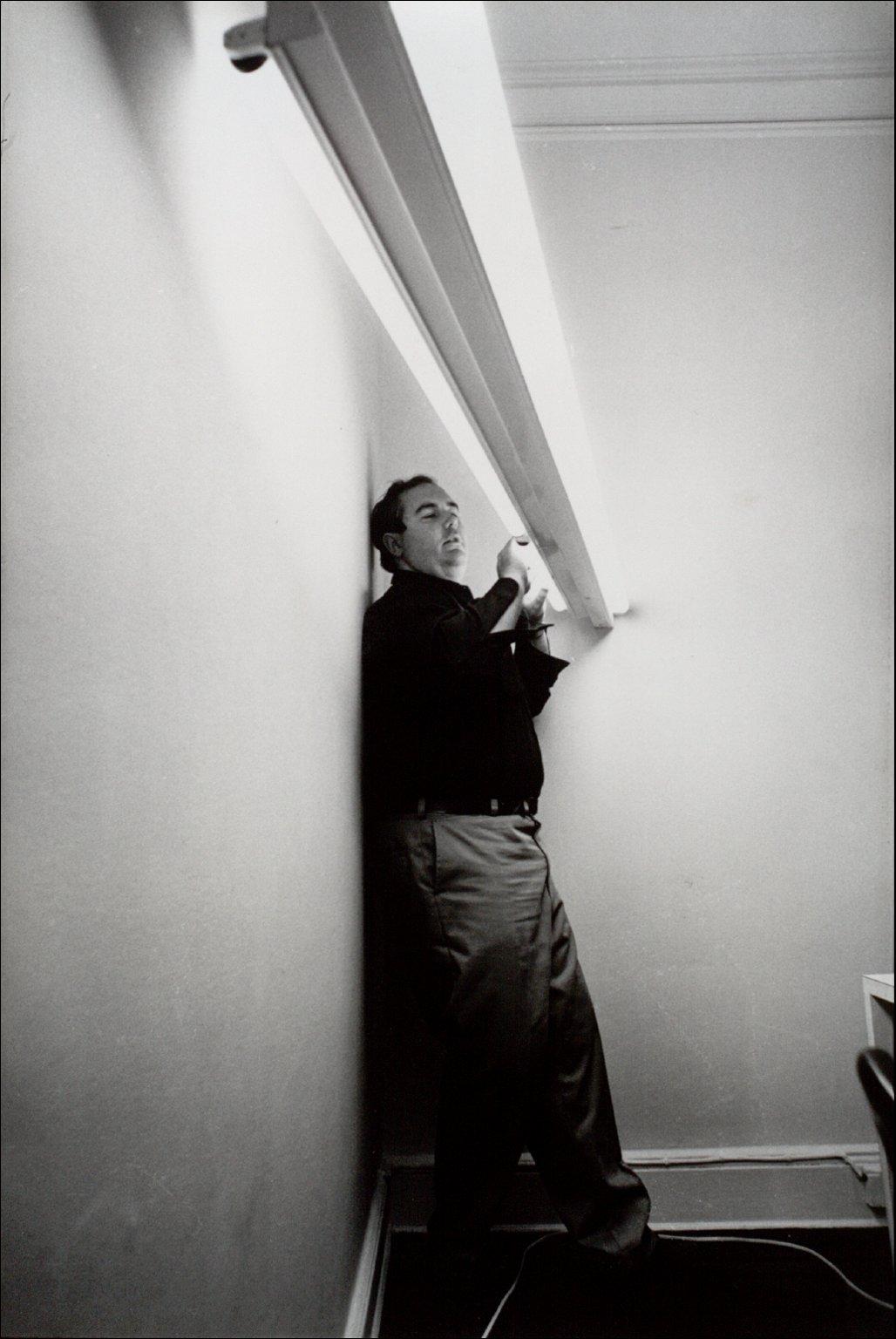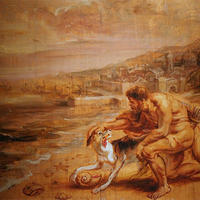More about Dan Flavin
- All
- Info
- Shop

Contributor
Like so many of the greats, Dan Flavin followed a winding path before he found art world success.
He and his twin, David, studied to join the Catholic clergy, then ditched that plan and both enlisted in the Air Force. It was while he was stationed in Korea that Flavin began taking university art classes. After coming home to New York (born and raised in Long Island), he worked in the Guggenheim mailroom and as a security guard at MoMA to pay the bills as a starving artist.
Associated with both Op Art and Minimalism, Flavin liked to call himself a “maximalist.” He meant that he embraced industrial, readymade, “ugly” objects by turning them into ethereal works of art. His sculptures (or “propositions,” as he preferred to call them) use ordinary, prefabricated fixtures to alter space through the careful use of light. But when folks conjecture that his work is about spirituality, higher power, or other cosmic stuff, Flavin used to simply say, "It is what it is and it ain't nothing else.” (Can’t you hear that in a Long Island accent?)
Many of his artworks are titled in dedication to friends and mentors. In fact, one of his largest installations, Untitled (To Tracy, to Celebrate the Love of a Lifetime), was aptly the backdrop for his wedding. His bride, Tracy Harris, was a promising emerging artist from Texas, and their romance budded by mail correspondence. She was five hours late for their first date (her flight to NY was delayed), but that didn't deter Flavin. Eventually they tied the knot with a big fat artsy wedding at the Guggenheim, amidst a multicolored fluorescent glow that bathed the entire museum.
Flavin’s “propositions” pose a conundrum for collectors: their bulbs eventually burn out after about 2,100 hours. To complicate matters further, some of the bulb models that Flavin originally used have since been discontinued. His estate was clever enough to anticipate this problem, and hired a special fabricator to re-make the exact same bulbs to keep the things a-burnin’ when the originals go dark.
Most of the hardware Flavin used is commercial and easily replaceable, which he pragmatically considered to be a bonus in the event of damage to his art. But now that he’s dead and his work is worth big money, collectors go to great pains to restore the original factory-made parts. Ironic, sure - but if anything is to be learned from what Flavin’s art means today, perhaps it’s that people can’t seem to trust that something is just “what it is.”
Sources
- “Dan Flavin,” Guggenheim Museum, accessed February 9, 2017, https://www.guggenheim.org/artwork/artist/dan-flavin
- “Dan Flavin, American Sculptor,” The Art Story, accessed February 9, 2017, http://www.theartstory.org/artist-flavin-dan.htm
- Georgia Dullea, “With This Spiral; Guggenheim Inaugurates a Marriage,” The New York Times, June 26, 1992, accessed February 9, 2017, http://www.nytimes.com/1992/06/26/nyregion/with-this-spiral-guggenheim-…
- Greg Allen, “The Dark Side of Success,” The New York Times, January 2, 2005, accessed Februrary 9, 2017, http://www.nytimes.com/2005/01/02/arts/design/the-dark-side-of-success…
Featured Content
Here is what Wikipedia says about Dan Flavin


Dan Flavin (April 1, 1933 – November 29, 1996) was an American minimalist artist famous for creating sculptural objects and installations from commercially available fluorescent light fixtures.
Check out the full Wikipedia article about Dan Flavin

















